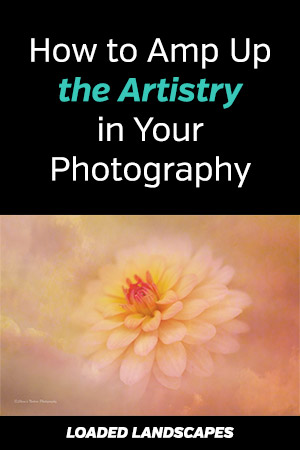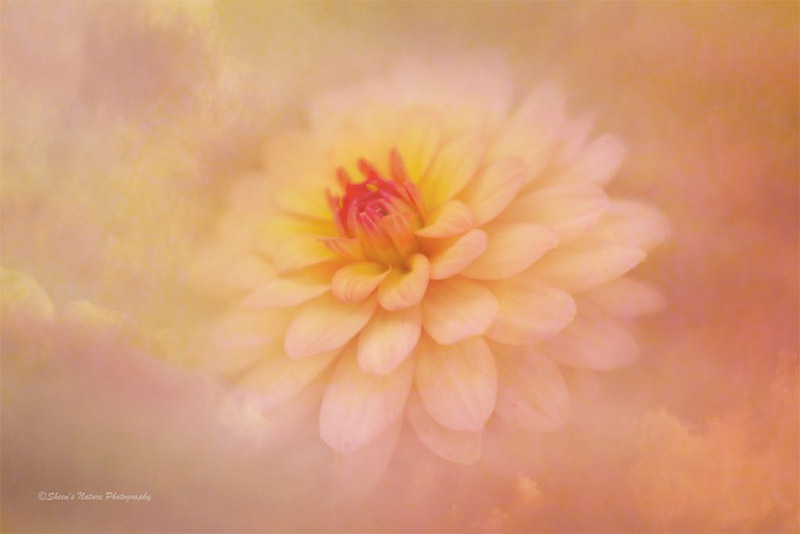
Dreamy Dahlia by Sheen Watkins
What separates your photography, your artistry from other photographers? How can you differentiate your images and give them your unique perspective? There are times we reach periods in our photography where we have more questions than answers on amping up our creativity.
This is true for beginners, advanced and pros.
In today’s photographic world, we are plagued or gifted with images every single day. If you’re on Facebook, Instagram, Pinterest and other content sites, images in your news feed fly across your screen within seconds. Some go without notice. Many start to look similar to other photographers. Others make you pause and gaze.
What inspires you to photograph a given subject? When you’re photographing your subject, are you shooting to capture what you’re seeing as-is? Or, are you capturing an image with creative post-processing in mind?
Your artistry is threaded throughout the photographic process. As a photographer, you’re already an artist. Like all artists, we need to to feed the creative gene. We’ll highlight some expected and unexpected places to find and create inspiration.
The Master Artists
I can’t draw a straight line. Other than working with color for interior design, I can’t paint or sketch. I didn’t realize that I had an ‘inner artist’ until I picked up the camera. We decide to photograph a subject when it catches our eye. It may be personal preference, something unique that draws our eye or an internal push outside of our comfort zone.
An easy-on-the-eyes approach is to invest time perusing the works of the masters. How did they use color? How did they use light and dark? How did they use texture? What made their perspective, their approach unique?
Who are the “Masters?”
In fine art the term ‘Old Master’ refers to great European painters from the 1300-1830 era. Other ‘Master’ artists cross centuries and countries. ‘Masters’ refers to those amazing artists across mediums who have demonstrated great achievement and ability.
Monet, Van Gogh, Rembrandt, Chagall, O’Keefe, Wolfe, Adams, Doisneau are just a few artists whose works reached and brought joy to many.
If we study the masters to copy their work, we’ll never be successful. If we study the work of the masters to learn, to appreciate their perspective, we’ll grow and expand our eye.
Visiting art galleries and fine art exhibits to observe and study, may influence you to try something completely new. Coffee table books (yes, they still exist), art history books, paperbacks, online searches provide glimpses into their world view.
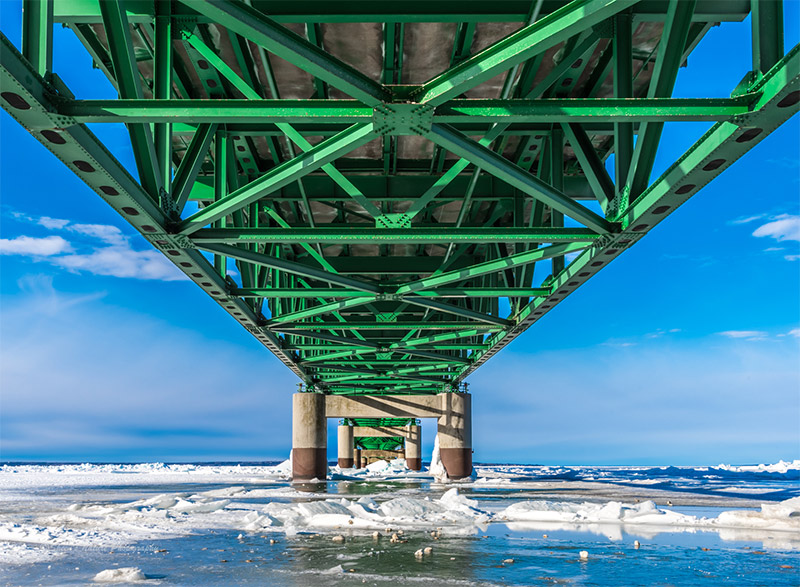
Mighty Mackinac Bridge by Sheen Watkins
Taking the Shot: Near Perfect or Creative Composition
What is the difference between a good image and a great image? If one of your answers is “composition” you are partially correct. Applying the compositional guidelines below will contribute to the strength of your overall image.
- Rule of thirds
- Balance
- Leading Lines – take you from front to back
- Patterns & Symmetry
- Perspective/viewpoint
- Background
- Depth of Field
- Framing
- Cropping
Creative composition may set your image apart more than a photograph that uses standard or the near-perfect compositional guidelines listed above.
How can we use and bend the guidelines?
Instead of tack sharp, go for blurred. Center your subject. Shoot your landscape tilted and crop in unusual places. Use leading lines with a distorted perspective.
When bending the rules, there are no rules.
Going for the Gusto
We invest time and money in our camera(s), lens(es) and gear. How often do we find ourselves diversifying our subjects, time of day and locations? If nature photography is our forte, why not take a time out and tackle street and architecture images. Conversely, if you’re an architecture or street photographer, try spending time in a gardener’s paradise.
Our artistry expands when we push our eye to photograph different subjects, different times of day and even with different lenses.
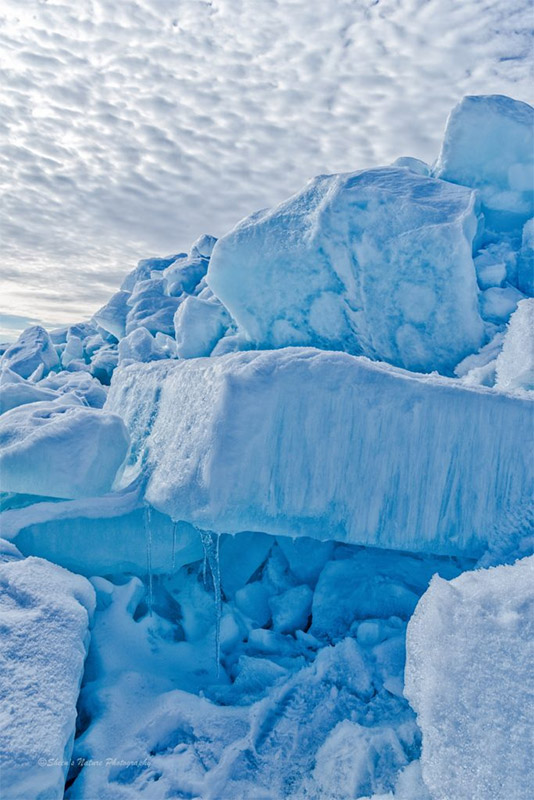
Blue Ice House by Sheen Watkins
“Just Go Solo”
It’s a Saturday morning. Your significant other is busy. Your photography buddies have other non-photography commitments. You’re thinking of spending the day cleaning, getting caught up on some post processing.
Stop the madness!
Just grab your camera, gear and go. It may be to a zoo, a museum, a walk in the city. Or, there may be an event or natural occurring phenomenon within driving distance.
Infuse your creativity by seeking out the unusual, out of your comfort zone or a new area.
Last weekend I was in Mackinaw City, Michigan to see the blue ice. During spring, the ice breakers go to work resulting in blocks, shards and formations of “blue” ice. Many travel to get photos of the “Mighty Mackinac Bridge aka Mighty Mac.” Like the other photographers I had to get a photo of the big bridge as seen above.
The real story though was about two miles away where I was able to traverse and photograph aqua blue blocks and caverns. There was only a couple of other photographers versus the many at the bridge.
Join the Band
Traveling with groups, attending workshops encourages learning, trying new techniques while having camaraderie of fellow photographers adds a little extra spark. The down side? Returning back with all photographers having almost the same composition.
A few tips when shooting with others: 1) Take the time to explore a bit on your own 2) When shooting a subject, turn around and face a different direction than others. As the light changes, so does the view behind you 3) If you shooting while standing, try getting lower or moving to higher ground and 4) Go for the iconic shots and move on – you don’t need 100 images just like the ones of the other shooters.
Post Processing Artistry: Play Time
One of the fastest roads to a rut is to apply the same or similar post processing techniques. When working with post processing software, try pushing the limits of the sliders. Apply clarity, contrast, hue, lights and darks, and other areas subtly or dramatically.
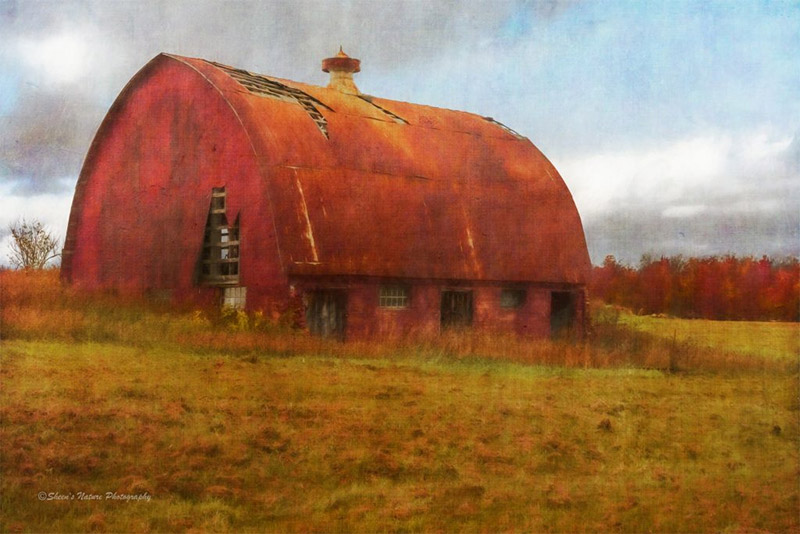
Michigan Barn by Sheen Watkins
Stretching with Plug-Ins
With today’s plug-ins, there are more apps, recipes, tools than you can imagine. With Lightroom, Photoshop, Topaz, and others, images can be taken to extremes that no longer look like a photograph. Instead, they are processed and transitioned into works of art.
The majority of our best images are result of our hard work. Sometimes they are subjects that we’ve taken multiple times over until we ‘got the image we envisioned.’ We may have followed the compositional guidelines to the letter or we may have intentionally ignored them all together.
For those great shots of yours that you think happened by accident? It wasn’t. You were there, you had your camera and you pressed the shutter. You made the magic happen.
